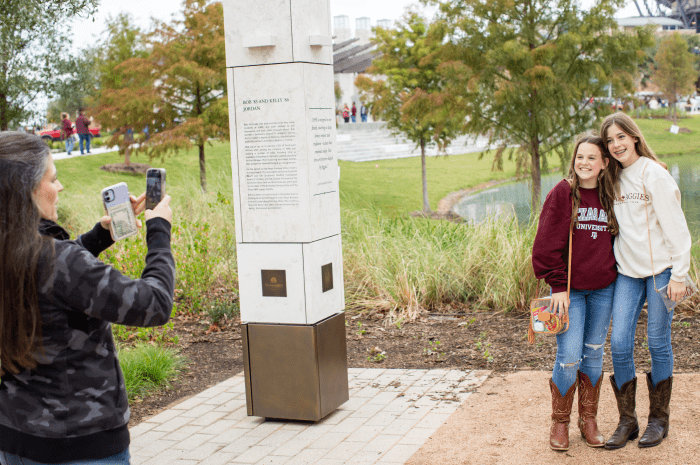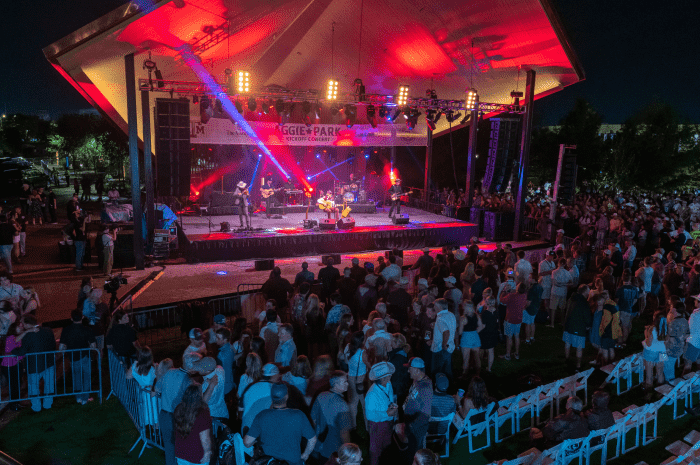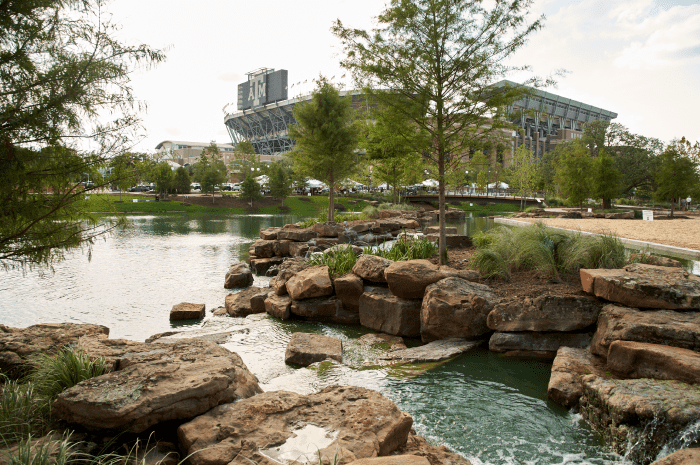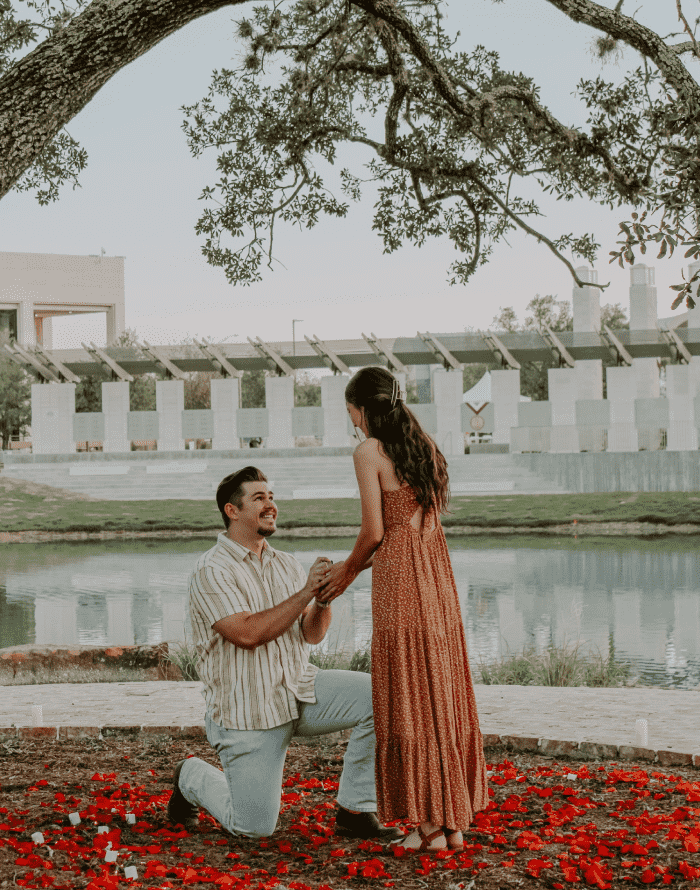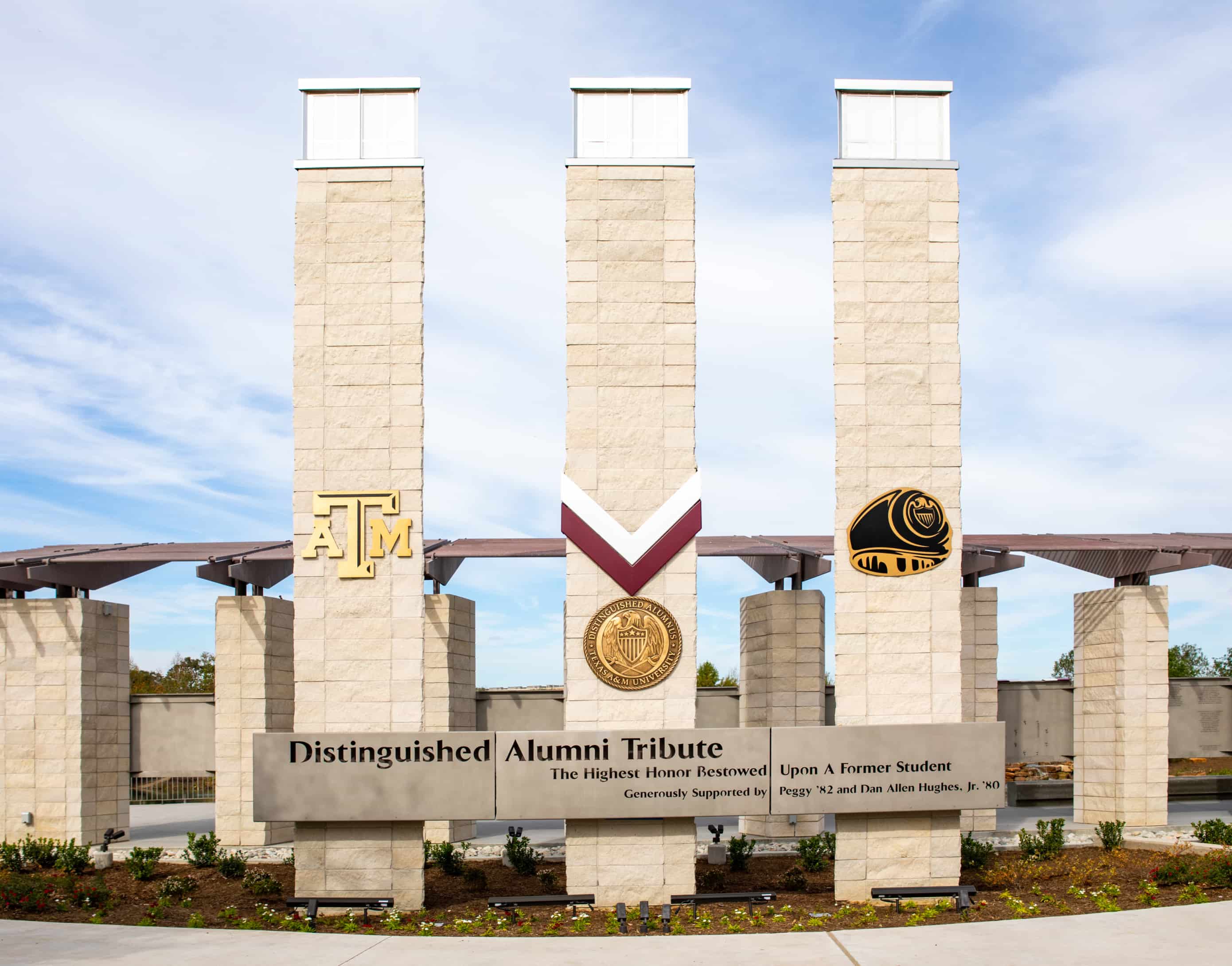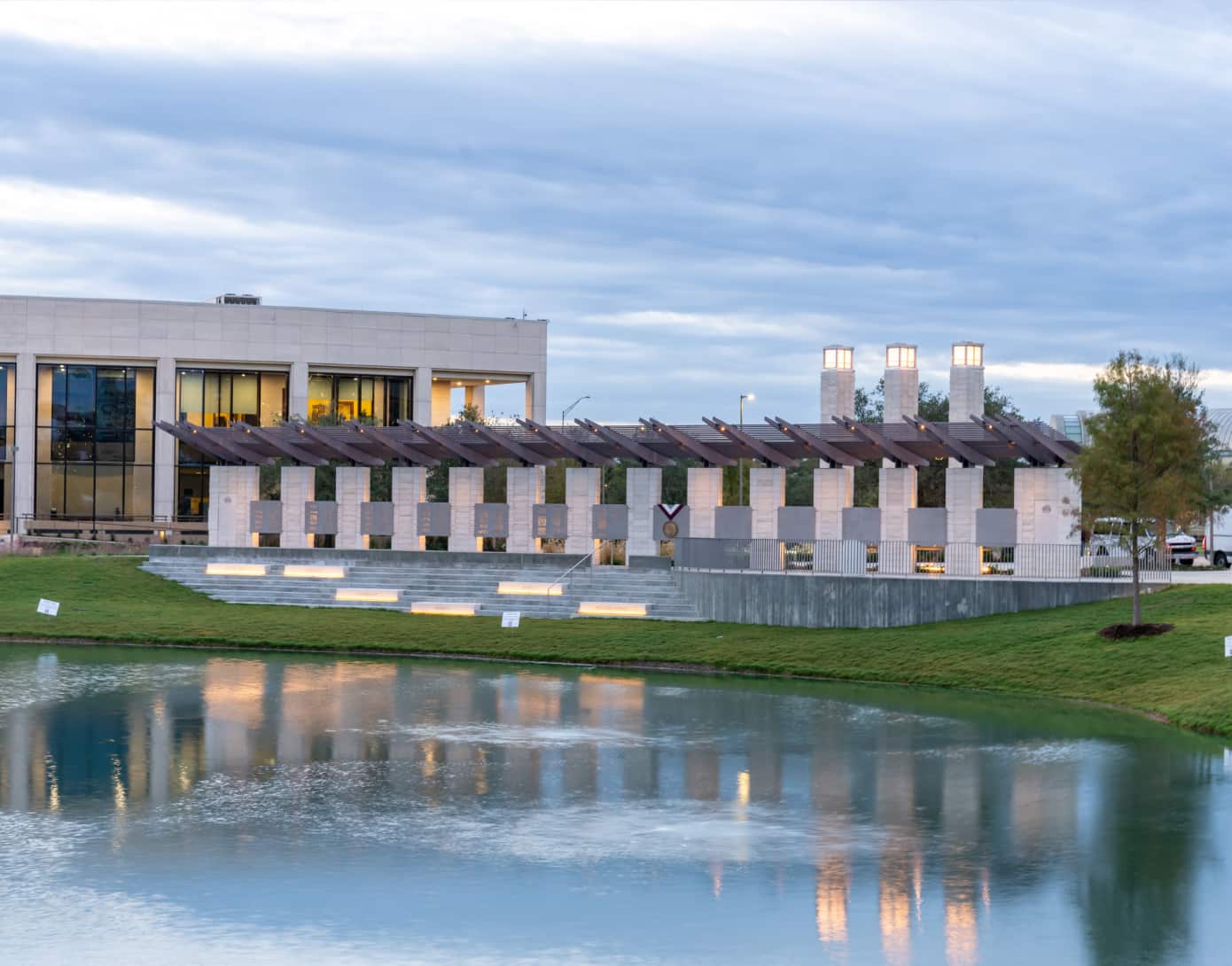The Story Of
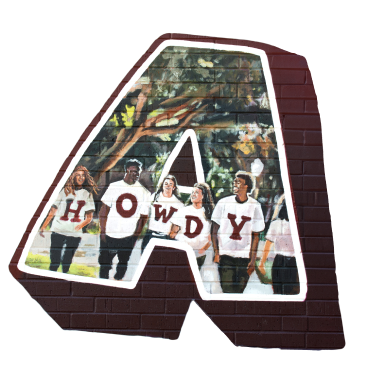



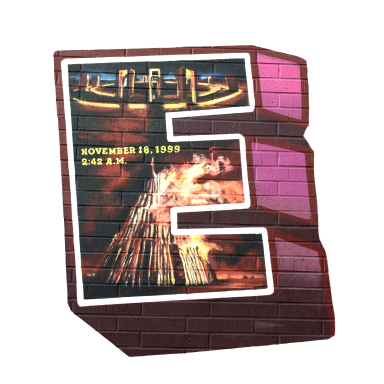
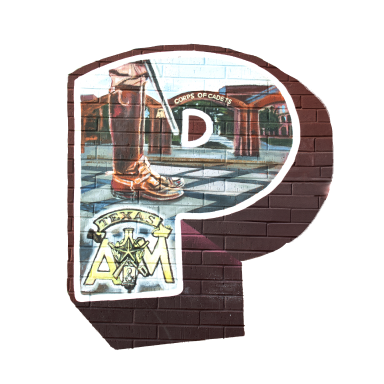

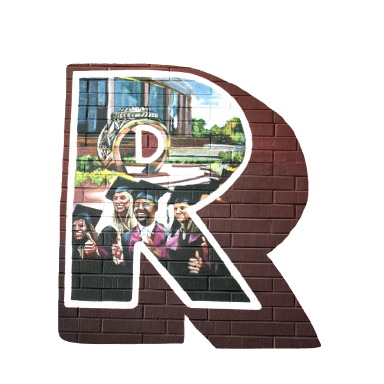

A sterling green space at Texas A&M University, Aggie Park has quickly become the heart of life on campus since its opening in 2022.
Described as the outdoor MSC, the 20-acre site was envisioned and developed by The Association of Former Students and funded by private donations as a gift to be used by the entire Aggie Network 365 days a year. Linking the Corps of Cadets Quad to Kyle Field and the Clayton W. Williams, Jr. Alumni Center to the Memorial Student Center and John J. Koldus Building, the vision for Aggie Park was sparked more than 20 years before ground was broken in 2020.
“The Association of Former Students sees Aggie Park as a tremendous opportunity for Texas A&M to enhance a primary gateway to our campus, create engaging green space for those who visit and live, study and work on our campus, and to promote camaraderie and fellowship, which are important to Aggies,” Association President and CEO Porter Garner ’79 said in 2021. “In Aggie Park, we saw an opportunity to make something better for Texas A&M and Texas Aggies.”
Over the decades, watching from his office window in the Clayton W. Williams, Jr. Alumni Center as this prime location sat undeveloped and seldom used, Garner developed his vision: “Aggie Park will be a premier green space that brings the Aggie Network together for relaxation, inspiration and celebration.”
Prior to its development, the site was an open field bisected by a drainage ditch that had steep slopes, which made most of the area unsuitable for use; what was accessible was mainly on gamedays for tailgating. After two years of development, the patchy grass lawn was replaced by walking trails, a stunning water feature, areas for students to study and gather, stages, a permanent Distinguished Alumni recognition and more. The park opened in September 2022 — after being delayed by the COVID-19 pandemic — to an outdoor concert featuring Robert Earl Keen, Jr. ’78 and thousands of Aggies celebrating their new space in Aggieland. The new park brings both additional tailgating space and a greatly enhanced tailgating experience to the heart of Texas A&M’s campus, with level surfaces and upgraded infrastructure such as public Wi-Fi access and modern restroom facilities.
Since opening, Aggies have made the park their home, integrating it into the very fabric of the Aggie experience. Follow along for how the park came to be, what treasures it contains and what you can do to support it for the next generation of Aggies.
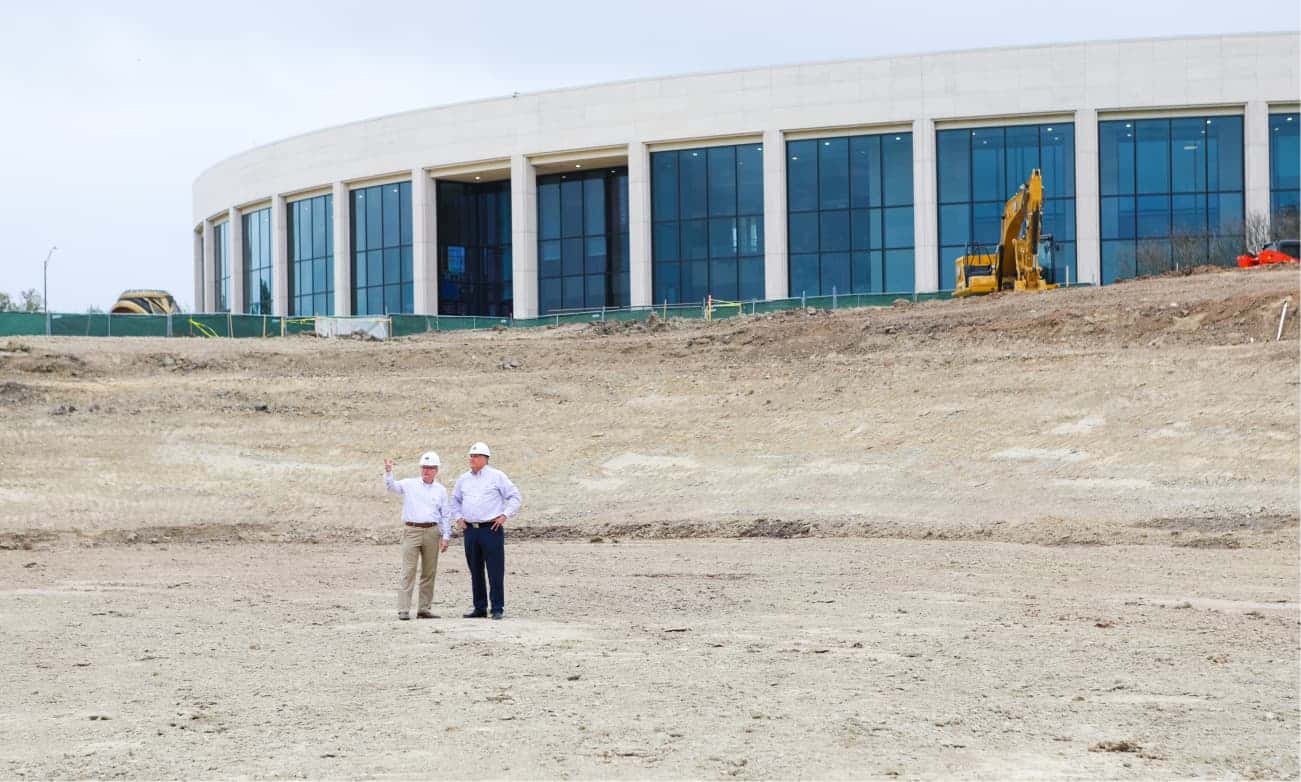

In Aggie Park, we saw an opportunity to make something better for Texas A&M and Texas Aggies.
Association President and CEO Porter Garner ’79
Photo by Randy Reyes ’01/The Association of Former Students
Scroll To Explore
01
Rudder Oak
06
Pillars of the Aggie Network
7
Creel Family Grove
09
Bellinger Family Grove
12
Baggett Boardwalk
13
Houston Street Pavilion
14
Lafield Plaza
15
L.C. "Buddy" Hunter '54 Plaza in memory ofJames R. Sears '54
17
Flagpole in memory of Charlotte Sharp
19
Clayton W. Williams, Jr. Alumni Center
20
Dee and Robert White ’81 Core Value Promenade
20A
Excellence
20B
Integrity
20C
Leadership
20D
Loyalty
20E
Respect
20F
Selfless Service
21
Chi Omega Promenade
22
Peterson Point
24
Class of 1975 Flagpoles
27
Brazos County A&M Club Path
29
Carter Waterfalls
31
Kardys Promenade
32
Dallas A&M Club Food Truck Alley
35
North Throckmorton Pavilion
37
Class of 1978 CenturyTree Legacy Project
38
Creamery Terrace
39
Philpy Picnic Grove
41
Yates Patio
42
Yates Family Path
43
Haynes Ring Plaza
44
Kathryn Greenwade ’88 Memorial
45
J.V. “Pinky” Wilson, Class of 1920 Statue
46
Bonfire Memorial
49
Victory Eagle
50
Ortega Family Lawn
51
West Performance Lawn Seating Area
Conceptual rendering courtesy of OJB
Landmarks
of Aggie Park
From lawns to benches, tributes and a creamery, each carefully crafted component of Aggie Park contributes to memories made in the green space.
The park renovation was funded through private donations raised by The Association of Former Students; the project cost about $45 million. Lead donor Wayne Roberts ’85 generously made an $8 million gift for the park in honor of his beloved late wife Shannon ’86. For those who visit, there may be a few new fixtures among the familiar.
Standing across Throckmorton Street from the Sanders Corps of Cadets Center, the first landmark you see might be a familiar one. The likeness of J.V. “Pinky” Wilson, Class of 1920, stands proud, looking across the Freels Family Field toward Kyle Field. Wilson authored the Aggie War Hymn while serving in World War I. The hymn was adopted by the student body and is still sung over 100 years later by Aggies as they lock arms and sway, as depicted by the War Hymn Monument, which stands at the other end of the Freels Family Field, facing Wilson’s statue, and depicts 12 Aggies swaying as they sing the War Hymn. The likeness of Wilson was moved from the Sanders Corps Center to Aggie Park to look upon the monument that depicts his legacy at Texas A&M.
Along Throckmorton just a few yards off the sidewalk, the Class of ’78 honored their late Classmate, Andy Duffie ’78, by planting seedlings from the Century Tree. Duffie started the Aggie Century Tree Project in 2010 as a way to raise funds for a Texas A&M scholarship by selling seedlings sprouted from acorns from the iconic tree outside Bolton Hall. After the scholarship was fully funded, many Aggies still wanted their own Century Tree seedlings. From 2014 until his passing in 2020, Duffie grew hundreds more seedlings. As a sign of appreciation, the Class of ’78 donated three Century Tree seedlings to grow in Aggie Park.
Just west stands the Bonfire Memorial Statue, called The Spirit of Bonfire. Given by the Class of 1987, the statue depicts a bonfire stack being built and then burned, along with an axe, pliers, a chain and a helmet. The memorial statue originally stood about where the J.V. “Pinky” Wilson, Class of 1920, statue stands today; it was moved farther into the green space during the park’s construction.
A bronze Victory Eagle with a 14-foot wingspan that stands 9 feet tall joins the other Class Gifts; it was given by the Class of ’91. Class Gifts are donated to the university, or university-affiliated entity such as The Association, by each year’s graduating Class.
Continue down the sidewalk and see the Dallas A&M Club Food Truck Alley. Local food trucks can park here to serve on Texas A&M's campus during school days or events like Aggie Ring Day.
Just next door is the Anteater Field House and Moore Family Creamery. The Anteater Field House was a gift from three brothers and their spouses, Bobby ’81 and Janice ’82 Jenkins, Raleigh ’83 and Kimberli ’83 Jenkins, and Dennis ’85 and Jennifer ’85 Jenkins. The family owns and operates ABC Home & Commercial Services, which uses an anteater as a company mascot. This field house has lawn games and sports equipment for students and park visitors to borrow to enjoy in the green space. The new creamery serves Texas’ favorite ice cream (Blue Bell) and is a nod to the old campus creamery that was a favorite spot for many students. Air conditioned, permanent restrooms abut the creamery and field house.
Continuing through Aggie Park, passing the central garden and the Swaim Amphitheater, you’ll find ClayDesta Point and the Rudder Oak. Modesta Williams, wife of the late Clayton W. Williams, Jr. ’54, funded this area that now hosts the Rudder Oak. This tree was originally located in front of the President’s House on campus, about 350 feet from where the tree currently stands. The house was designed by Margaret Rudder, the wife of Maj. Gen. Earl Rudder ’32, a beloved past president of Texas A&M. When Gen. Rudder passed away in 1970, the Aggie Women's Club planted the tree near the President's House in his honor. The former President’s House, which had occasionally been used as an events space for several years, was removed during the park’s development. Bricks from the president’s home, which stood in the Aggie Park acreage for over 50 years, were used at ClayDesta Point, an area that stands next to the steel Plank Bridge overlooking the two-tiered lake. If you peek under the Plank Bridge from ClayDesta Point (derived from the names “Clayton” and “Modesta”), you might see some of the waterfowl that have made the lake their home. You can read more about the ducks in Aggie Park at tx.ag/AggieParkDucks.
The 102-foot Plank Bridge spans the lake and was specifically designed to be wide enough to accommodate the Corps March-in formation. The nearly 2-acre lake is stocked with largemouth and striped bass, and redfish in the warm months and rainbow trout during winter months for catch-and-release fishing; it’s restocked up to 10 times a year. The roof of the Wood Stage is made of copper, and will patinate over time, just like the now green dome of the Academic Building.
As you walk toward the Clayton W. Williams, Jr. Alumni Center, a stretch of turf leads to the Haynes Ring Plaza. This green expanse, called the Williams Ring Lawn, was given by Modesta and the late Clayton W. Williams, Jr. ’54 family and is lined with the Pillars of the Aggie Network. Each pillar tells a different Aggie’s story, imparting wisdom and inspiring generations of Aggies who visit the Williams Alumni Center.
Information about reserving space in Aggie Park for your event is available here.

The nearly 2-acre lake is stocked with largemouth and striped bass, and redfish in the warm months and rainbow trout during winter months for catch-and-release fishing; it’s restocked up to 10 times a year.
Photo by Richard Badillo for The Association of Former Students
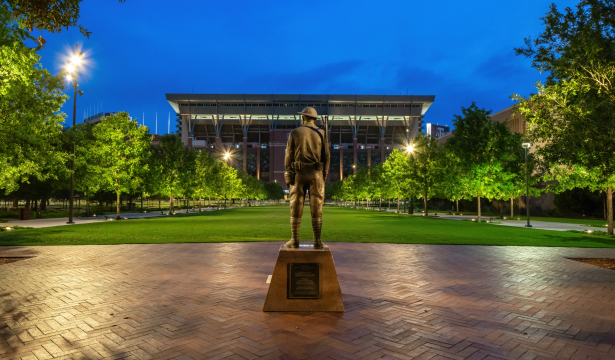
The likeness of Pinky Wilson, Class of 1920, stands proudly overlooking the Freels Family Lawn toward the War Hymn Monument on the east side of Kyle Field.
Photo by Jenna Thornton ’24/The Association of Former Students

The Class of 1978 ’78 honored their late Classmate, Andy Duffie ’78, by planting seedlings from the Century Tree.
Photo by Delaney Whitworth ’22/The Association of Former Students

The Spirit of Bonfire was a gift from the Class of 1987 and depicts a bonfire stack being built, then burned, alongside the tools that were used by those who built the stacks across the years.
Photo by Mark Guerrero ’12/Texas A&M University System
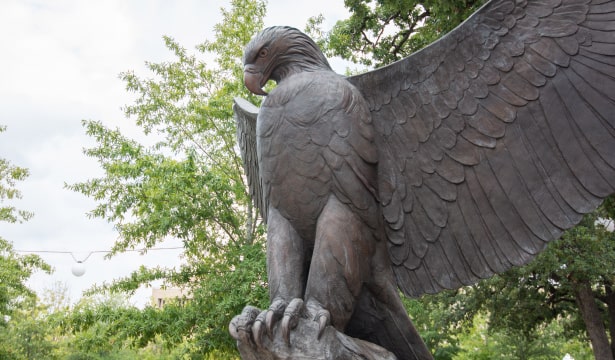
A bronze Victory Eagle with a 14-foot wingspan that stands 9 feet tall joins the other Class Gifts; it was given by the Class of ’91.
Photo by Kyle Heise ’25/The Association of Former Students

The Dallas A&M Club Food Truck Alley offers a space for visitors to gather to enjoy a meal from local food trucks in the heart of campus.
Photo by Richard Badillo for The Association of Former Students

The Moore Family Creamery serves Texas’ favorite ice cream (Blue Bell) and is a nod to the old campus creamery that was a favorite spot for many students.
Photo by Rebecca Harris ’19/The Association of Former Students
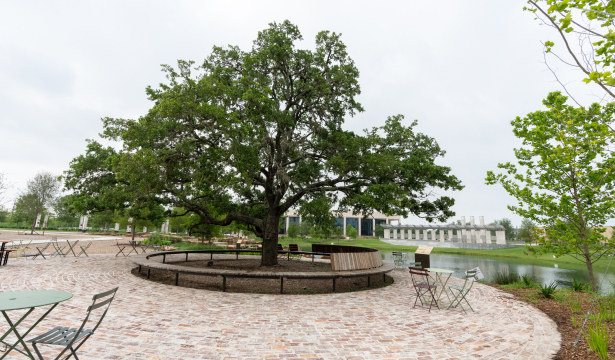
The Rudder Oak at ClayDesta Point was originally in front of the President’s House, about 350 feet from where the tree currently stands. It was moved before the park’s development.
Photo by Richard Badillo for The Association of Former Students
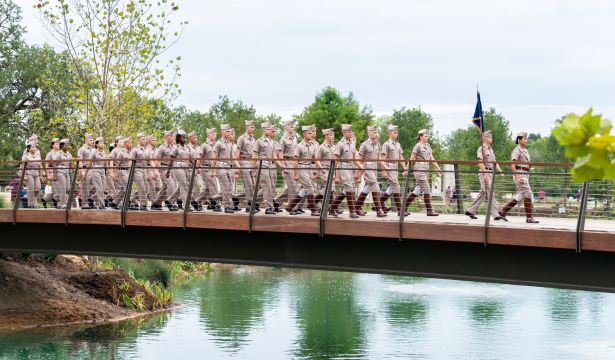
The 102-foot Plank Bridge spans the lake and was specifically designed to be wide enough to accommodate the Corps March-in formation.
Photo by Richard Badillo for The Association of Former Students
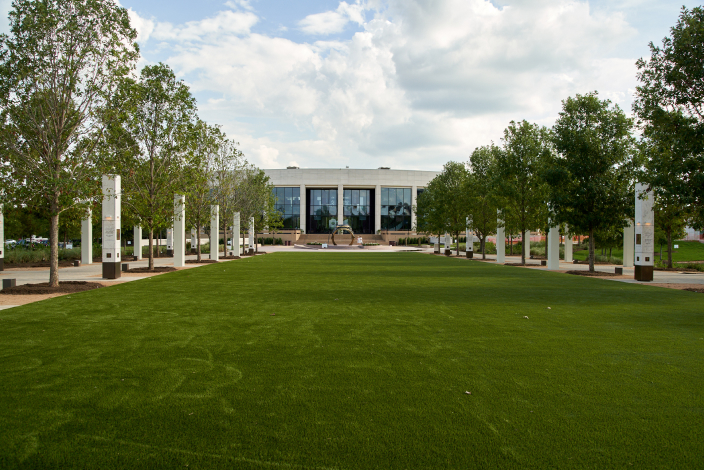
The Williams Ring Lawn connects the Haynes Ring Plaza in front of the Clayton W. Williams, Jr. Alumni Center with the location of The Association’s planned student-focused building.
Photo by Butch Ireland for The Association of Former Students
The Distinguished Alumni Tribute
Across the lake is the Distinguished Alumni Tribute. Gifted by donors including lead donors Distinguished Alumnus Dan Allen Hughes ’81 and his wife, Peggy ’82, the tribute honors those who have received the highest honor bestowed upon a former student of Texas A&M University. The structure was designed by Shelley ’78 and Jeff ’78 Potter, both Distinguished Alumni themselves, to reflect and inspire excellence in those who visit. Another Distinguished Alumnus, Jim Thompson ’68, built the tribute with his construction company, James R. Thompson Inc. This tribute sits at the highest elevation in Aggie Park as a nod to it being the highest honor for an Aggie.

The Distinguished Alumni Tribute sits at the highest elevation in Aggie Park as a nod to it being the highest honor for an Aggie.
Photo by Richard Badillo for The Association of Former Students
Learn more about Texas A&M’s Distinguished Alumni and nominate a deserving Aggie at AggieNetwork.com/DistinguishedAlumni.
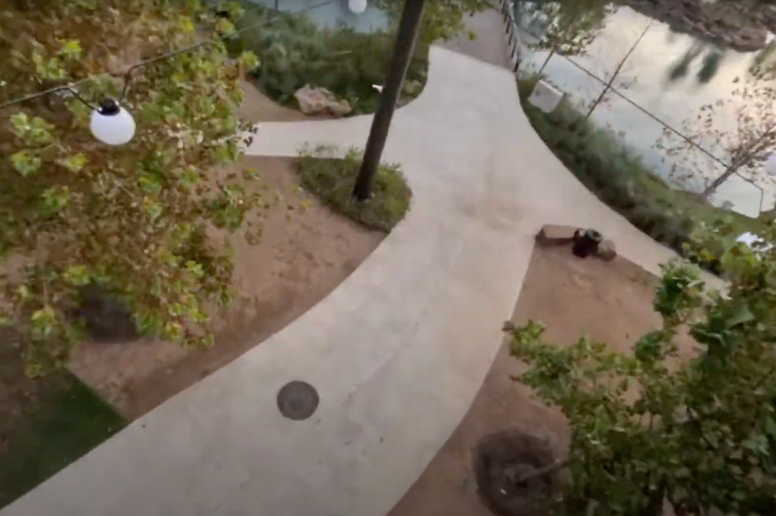
Fly through Aggie Park by watching this drone’s-eye footage.
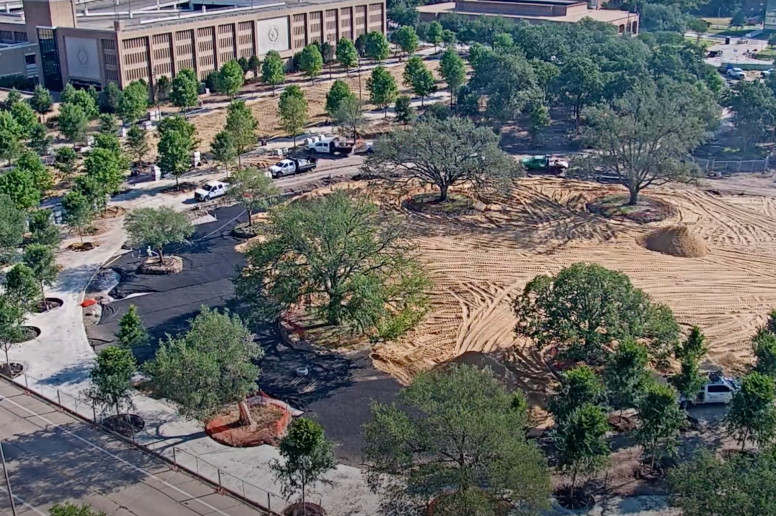
Watch two years of development in two minutes as Aggie Park comes to life.
The Story Of
The Mural
Photo by Kyle Heise ’25/The Association of Former Students
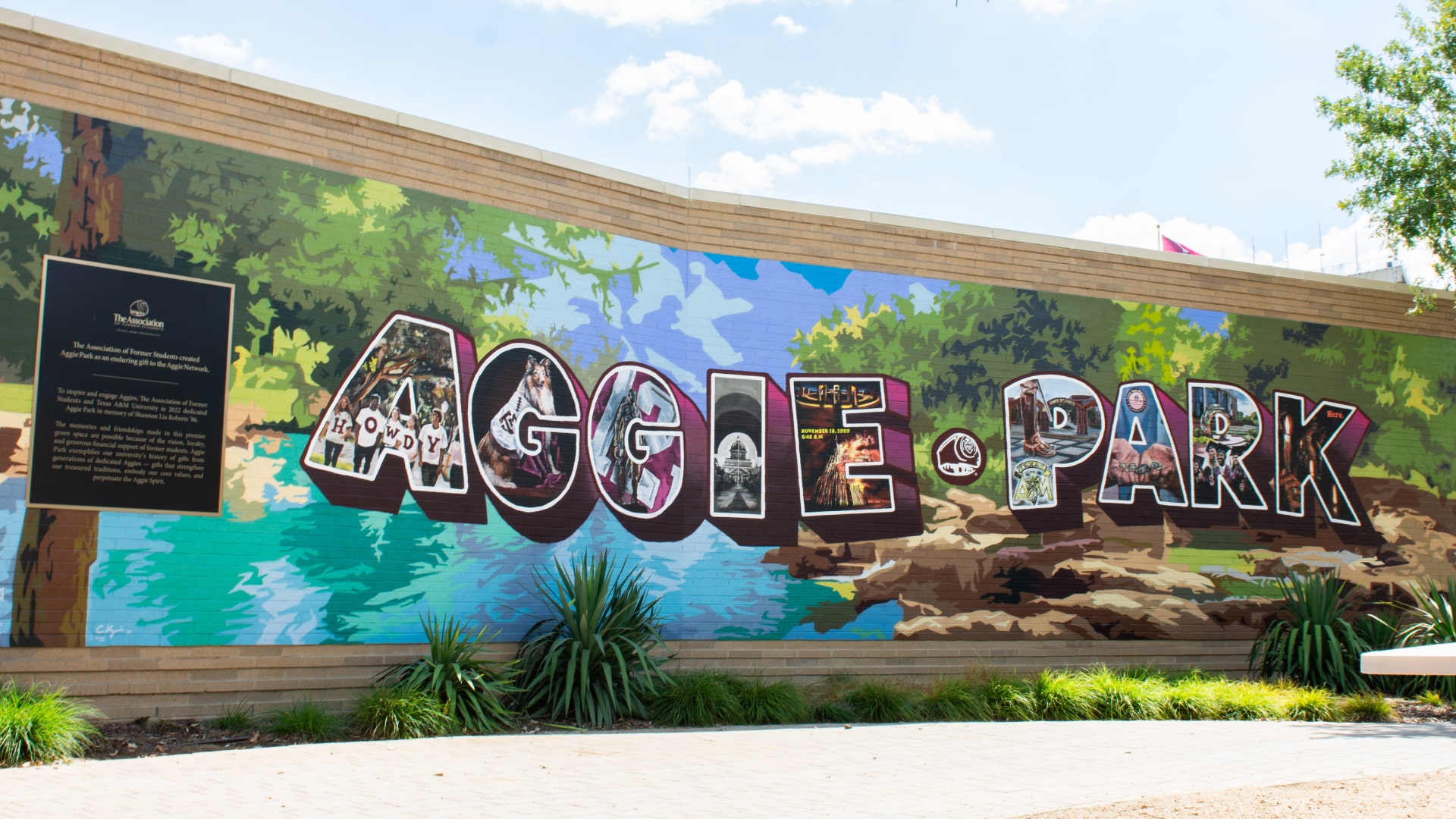

Howdy
The Association supports incoming freshmen’s experience even before they step on campus, from printing and financial support for orientation camps like Fish Camp and T-Camp to welcoming students at New Student Conferences and hosting a student’s first on-campus yell practice at GatheRing during Howdy Week.

Reveille
The Association supports Aggie traditions from the Corps of Cadets to Muster, Silver Taps, and more, as well as a host of student groups like Aggie Cinema, Century Singers and Fish Aides.

12th Man
At each stage of an Aggie’s life, The Association is there. The Association provides financial support to supplemental instruction for current students, Former Student Career Services for graduates and much more. Like the famous 12th Man, E. King Gill, Class of 1924, The Association steps in when Aggies need it most.

Academics
Numerous academic scholarships are provided by The Association in addition to financial support for supplemental instruction and more to help students achieve their academic goals.

Bonfire
The Association organized a benefit concert in 2000 in the wake of Bonfire’s collapse to raise money for the families of the victims. The Association is also a longtime contributor to the annual Bonfire Remembrance Ceremony.

Corps of Cadets
The Association contributes tens of thousands of dollars from its donors to the Corps each year, providing financial aid to the Aggie Band, Ross Volunteers, Parsons Mounted Cavalry and more.

Aggie Ring
The Association has proudly operated the Aggie Ring Program for over 50 years. The Association began Aggie Ring Day in 2000 to celebrate this milestone in an Aggie’s life and facilitates lost and found Aggie Rings finding their way back to their owners.

Graduating and life as a former student
From a New Grad Checklist designed to help graduating seniors connect with their local A&M Club and career resources, to logistical and communications support of former student groups, The Association is the organization that supports former students.

Here
The Association provides financial, logistical, communications support and more to the essential Aggie tradition of Muster. Through the Worldwide Muster Roll Call held each April 21, The Association ensures every single Aggie who has passed away is called and answered for.
To celebrate gifting Aggie Park to Texas A&M University, The Association commissioned a mural by DVLVD Murals, led by artist Cade Kegerreis, which was painted on the Anteater Field House in August 2024.
The imagery within the letters of “Aggie Park” tells a narrative of The Association’s support of the Aggie experience; from freshman year through graduation and beyond. Tag @AggieNetwork in your photos so we can share them on social media!
The Next Phase
Nestled in Aggie Park and adjacent to the Clayton W. Williams, Jr. Alumni Center will soon be a new building – one designed specifically to serve Texas A&M’s students.
The reason for this project is simple, Association Vice President and project leader for Aggie Park Marty Holmes ’87 said: to create a functional, inspirational space for students at Texas A&M.
“It’s a legacy for The Association to give back to our student body,” he said. “We support our students every day in some form, though some walk across the stage not realizing it — from hundreds of student organizations, to Muster and traditions that we support through our Annual Fund dollars.
“The Association will raise funds for the new building from donors; it will not be funded by Annual Fund contributions,” Holmes said. “But it will still be a tangible gift from The Association to be enjoyed by all current, former and future students, and serve as an example of the many ways we’ve impacted them through their Aggie experience.”
Planned spaces for student use, a café to complement the Moore Family Creamery and a new hall for Aggie Ring Day are all planned. The new building is designed to accommodate the enormous crowds that Ring Day attracts and funnel traffic efficiently onto the Williams Ring Lawn toward the Haynes Ring Plaza, which will be available for photos on Ring Day along with the rest of the park. The building will also allow improvements to the efficiency of the Aggie Ring ordering process.
Construction is slated to begin in 2026. The cost is estimated to be $60 million.
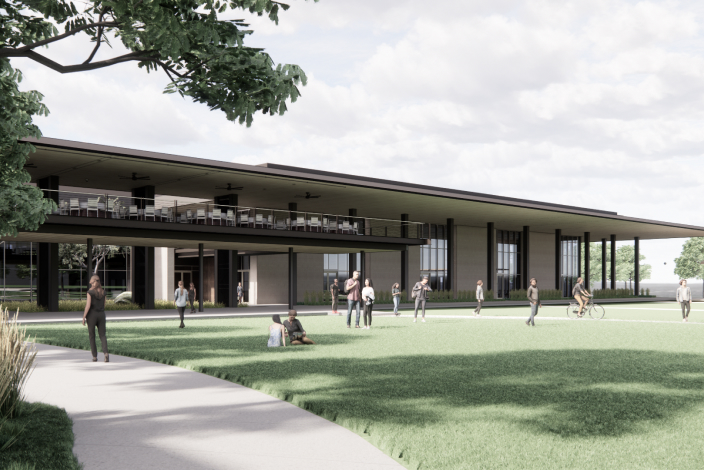
Conceptual rendering courtesy of Lake Flato
Make Your Mark
Aggie Park will be enjoyed by hundreds of thousands of students and visitors in coming decades and seen by millions more on national TV during football broadcasts. The development of the park and the forthcoming new building creates a rare opportunity to associate your name or your family’s name with various elements within this prominent, premier addition to the landscape of Texas A&M University.

Aggies listen to performers during the 12th Jam Music Festival organized by MSC Town Hall on Oct. 22, 2022, in Aggie Park.
Photo by Megan Fifer ’25/MSC Town Hall
To learn more about how Aggie Park and the new building can be part of your Aggie legacy, please contact Association Vice President Allison Seibert ’11 at 979-845-7514 or Email Us
Parkland Has Rich Aggie History
The land where Aggie Park now lies has served Texas A&M University in many ways over the years – starting before the college even existed
By Sue Owen '94
Digging clay at ‘College Lake’
Before A&M opened in 1876, clay was dug on the site to make red brick for the first seven campus buildings: Old Main, Gathright Hall and five professors’ houses later nicknamed “Quality Row.” The clay excavation site filled with water, and some 20 years later it was known as “College Lake,” according to A&M’s 1895 yearbook, The Olio. The yearbook description claimed there was enoughwater that students could go canoeing with their sweethearts. This College Lake became the long-familiar watery ravine that wandered across the parkland and fed into Bee Creek. With Aggie Park’s new lake, a piece of early Texas A&M heritage makes a return.

Texas A&M’s 1895 yearbook describes College Lake as a “delightfully picturesque spot” that was “surrounded by an abundant growth of cat-tails and willows.”
1895 Olio Photo
Faculty and leaders’ homes
From 1876 to 1938, most A&M faculty lived on campus, and seven of these early houses were on the site of Aggie Park. Later, two houses were built that stood for many years: one constructed in 1939 and one in 1965. The 1939 residence housed deans, then chancellors, then vice presidents; its first resident was engineering dean Gibb Gilchrist. Nearby, a president’s home was built in 1965 and first occupied by Texas A&M’s 16th president, Maj. Gen. James Earl Rudder ’32. This was Texas A&M’s third presidential home; it replaced one that stood on the north side of campus from 1891 until it burned down in 1963.

Photo courtesy of Cushing Memorial Archive & Library
Veterans Village
After World War II, A&M put up temporary homes, including duplexes and prefabricated Quonset huts, in the area that is now Aggie Park to house the influx of returning Aggie students and other veterans enrolling under the GI Bill. Among those veterans and family were the late Harold J. “Bill” Haynes ’46 and his wife, Reta, namesakes of the Haynes Ring Plaza dedicated in 2009. Reta Haynes recalls living in Veterans Village as an “adventure,” and she writes in her family memoir, “We made the amazing discovery that our hut must have been very close to … where the bronze replica of Bill’s Aggie Ring now sits!”
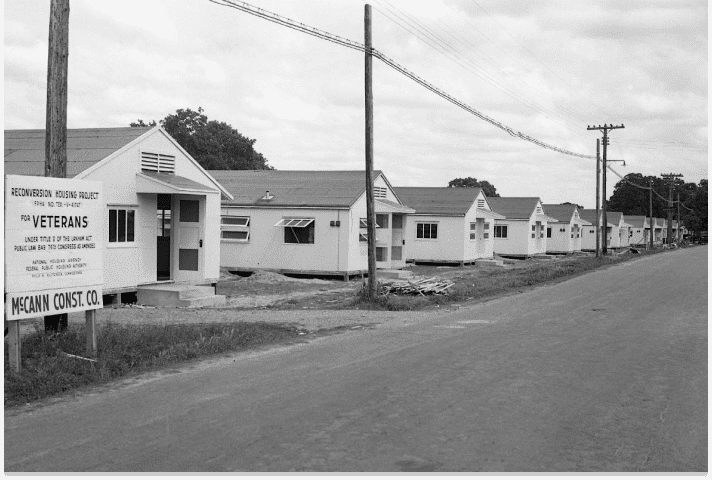
Veterans Village offered temporary housing for World War II veterans enrolling at Texas A&M.
Photo Courtesy Of Texas A&M Cushing Memorial Library and Archives
Tailgating
As Kyle Field expanded and football crowds increased over the years, game day picnics and tailgates in the park became popular. What began with packed sandwiches and ice chests grew as Aggies began bringing grills for cooking and tents for shade. At some point, it became common to refer to the area as “Spence Park,” although that is actually the name given in 1953 to a nearby, smaller park, which now includes the Sanders Corps of Cadets Center.
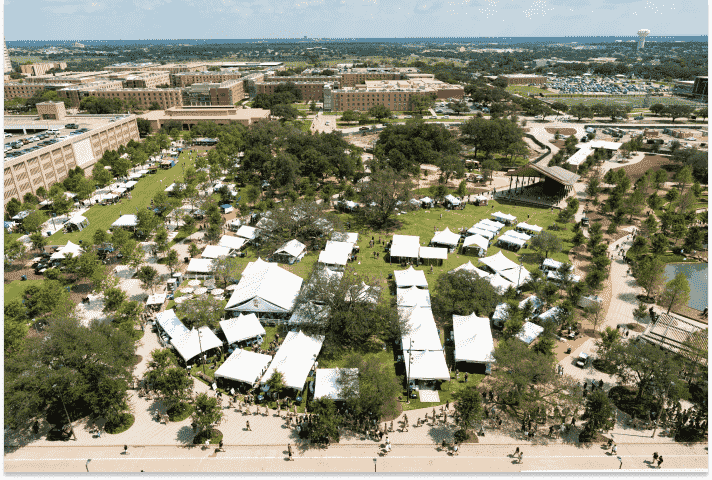
Aggies tailgate in September 2022 in Aggie Park before Texas A&M faced Appalachian State. The park brought both additional tailgating space and a greatly enhanced tailgating experience to the heart of Texas A&M’s campus.
Photo by Laura McKenzie/Texas A&M University Division of Marketing & Communications
Mount Aggie
Over the years, the park area had various exercise tracks and equipment, and the Corps of Cadets used it for physical training, but in 1972, a real obstacle began rising: Mount Aggie, the university’s artificial ski slope, which got taller and more elaborate over the years as skiing classes honed their skills. The current Mount Aggie is on west campus; see its locations over the years at tx.ag/MtAggieSites.
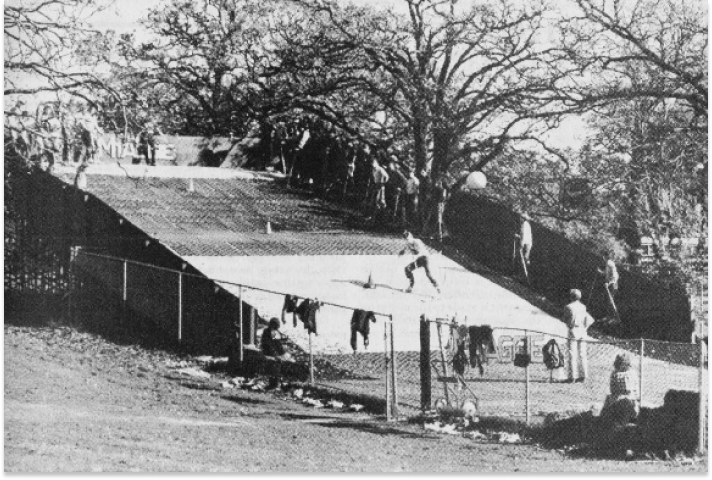
Several of Mount Aggie’s many incarnations were located in present-day Aggie Park.
1982 Photo By Robert Snider ‘86/The Battalion
Photo by Laura McKenzie/Texas A&M University Division of Marketing & Communications
Getting to the roots of Aggie Park’s trees
Walking among the trees of the newly unveiled Aggie Park, you could be forgiven for thinking that most of them had been growing there for years.
In addition to the trees that were there before construction began, The Association of Former Students brought in more than 600 mature trees to create a shady canopy of foliage over much of the new park’s paths and gathering spaces.
The results speak for themselves: From the cypress trees hugging the banks of the lake to the proud oaks of the park’s central grove, the sheer number and variety of trees make them a sight to behold. And for amateur arborists in the know, the trees of Aggie Park hold plenty of interesting stories and connections to Texas A&M lore.
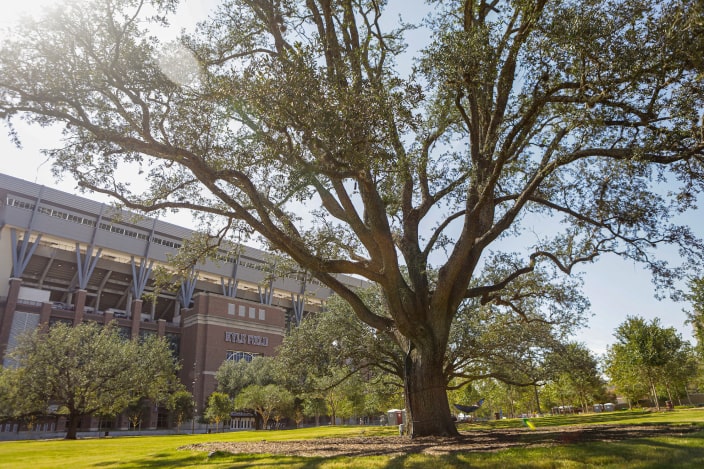
Photo by Abbey Santoro '22/Texas A&M University Division of Marketing & Communications
By the Numbers
Aggie Park is now home to 634 trees of various species. Over 100 of those are live oaks — the same tree whose leaves appear in the iconic design of the Aggie Ring. Tucked away among some of those oaks is a lone pecan tree, the official state tree of Texas. And for some extra Aggie flair, there are just over 130 burgundy elms, whose leaves turn a deep maroon when temperatures drop in the fall.

The famous Rudder Oak at its new home in Aggie Park, encircled by a pathway made of bricks from the former president’s house.
Photo by Rebecca Harris ’19/The Association of Former Students
Trees on the Move
Upon their first walk through Aggie Park, longtime visitors to campus may notice familiar trees in some unfamiliar places. During construction, about a dozen of the space’s original trees were carefully moved to new permanent homes in the park.
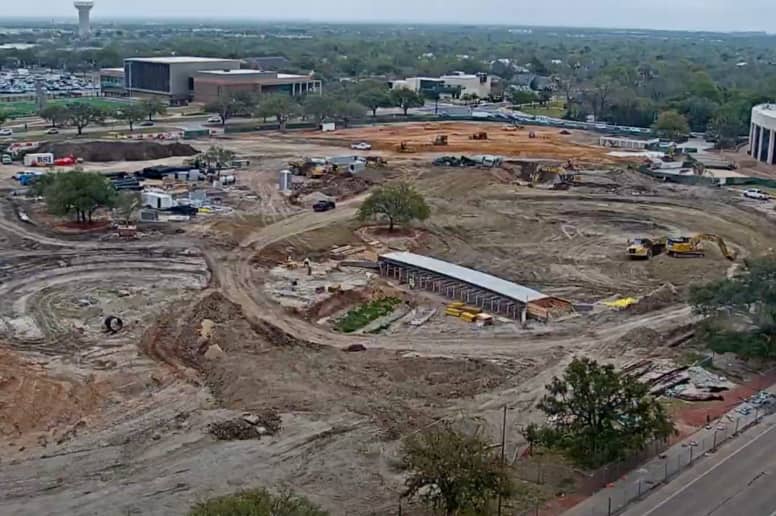
Watch a time-lapse video showing the process in action as crews move a 100-plus-year-old live oak to a new spot.
The Rudder Oak
Of the trees that were moved during the park’s construction, one in particular holds a special place in Aggie history. When legendary Texas A&M president Maj. Gen. James Earl Rudder ’32 died in 1970, the Aggie Women’s Club planted a tree near the President’s House in his honor. More than 50 years later, the sturdy oak has a new home in the heart of Aggie Park.
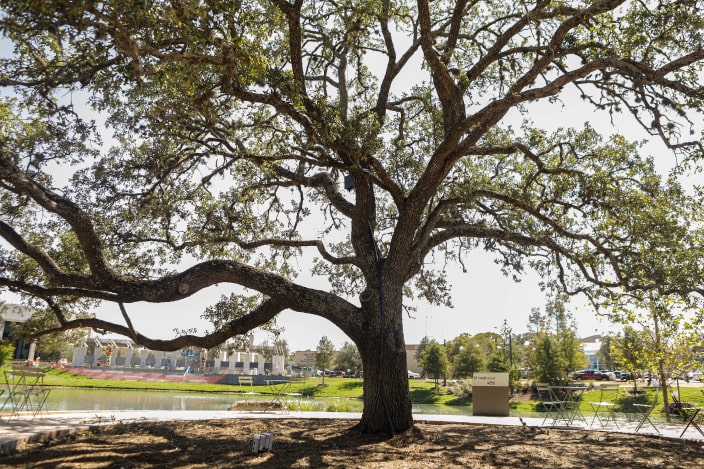
Photo by Abbey Santoro '22/Texas A&M University Division of Marketing & Communications
A Sweet New Purpose
Though some trees had to be cut down during the construction process, they’ve still found an important role in the new park. Visitors to the Moore Family Creamery in the middle of the park can sit and eat their ice cream at a wooden counter made from a few trunks of those fallen trees.

Photo by Abbey Santoro '22/Texas A&M University Division of Marketing & Communications
Century Tree's Offspring
As additional construction continues, Aggie Park has three new live oaks with some big shoes to fill — all three are children of Texas A&M’s Century Tree, one of the oldest and largest trees on campus, and by far the most famous. The 5- to 6-year-old offspring of the legendary oak were originally cultivated by the late Andy Duffie ’78, who grew and sold hundreds of baby Century Trees to raise money for scholarships and campus programs through the Aggie Century Tree Project. Their inclusion in the park was generously sponsored by the Class of 1978 in Duffie's memory.
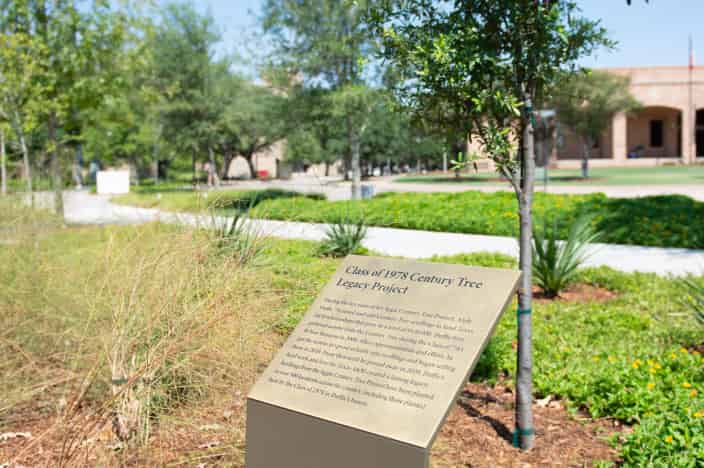
Photo by Kyle Heise ’25/The Association of Former Students


